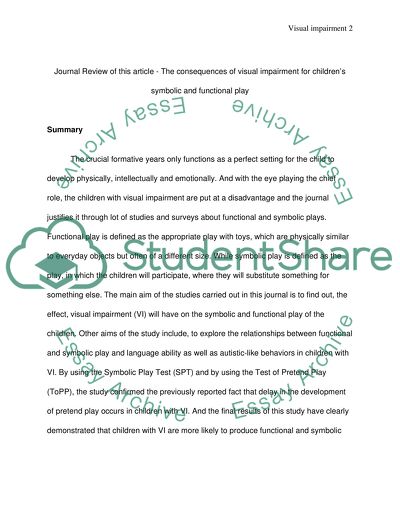Cite this document
(“Journal Review of this article - The consequences of visual impairment Essay”, n.d.)
Retrieved from https://studentshare.org/miscellaneous/1539412-journal-review-of-this-article-the-consequences-of-visual-impairment-for-childrens-symbolic-and-functional-play
Retrieved from https://studentshare.org/miscellaneous/1539412-journal-review-of-this-article-the-consequences-of-visual-impairment-for-childrens-symbolic-and-functional-play
(Journal Review of This Article - The Consequences of Visual Impairment Essay)
https://studentshare.org/miscellaneous/1539412-journal-review-of-this-article-the-consequences-of-visual-impairment-for-childrens-symbolic-and-functional-play.
https://studentshare.org/miscellaneous/1539412-journal-review-of-this-article-the-consequences-of-visual-impairment-for-childrens-symbolic-and-functional-play.
“Journal Review of This Article - The Consequences of Visual Impairment Essay”, n.d. https://studentshare.org/miscellaneous/1539412-journal-review-of-this-article-the-consequences-of-visual-impairment-for-childrens-symbolic-and-functional-play.


